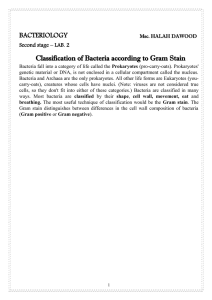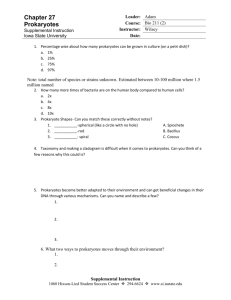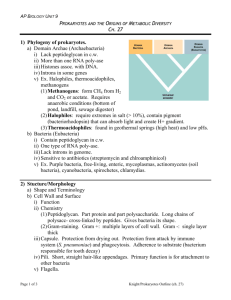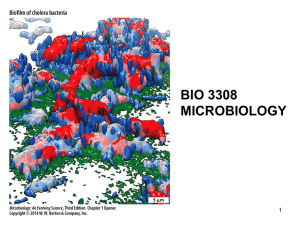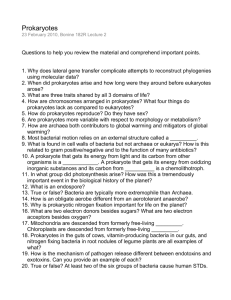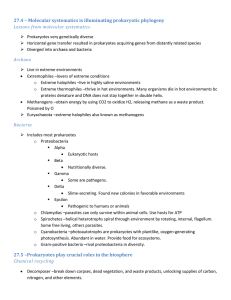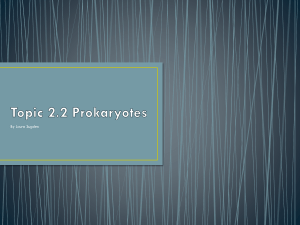Unit 14 Prokaryotes Lack a true nucleus
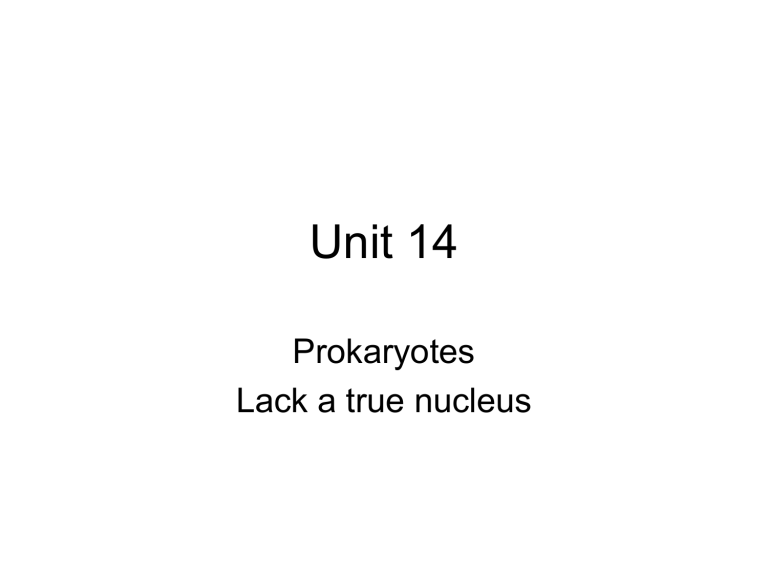
Unit 14
Prokaryotes
Lack a true nucleus
Three domains of Prokaryotes
• Bacteria
• Human or animal disease.
• Many species even play beneficial roles by producing antibiotics and food.
• The soil teems with freeliving bacteria that perform many essential functions
• Our bodies are covered with bacteria
Three domains of Prokaryotes
• Archaea: Life's
Extremists...!
• live in extreme habitats such as thermal vents or hypersaline water.
• They may be extremely abundant in environments that are hostile to all other life forms.
Three domains of Prokaryotes
• Eukaryota
• Single celled eukaryotes
– Euglena, Amoeba,
Paramecium
• Mushrooms, bread molds, water molds, yeasts
• Flowering plants, gymnosperms (conifers), ferns, mosses
•
• Animalia
Prokaryotes
• Three basic shapes of bacteria
• Bacilli (bacillus, singular) are rod-shaped
• Cocci (coccus, singular) are spherically-shaped
• Spirilla (spirillus, singular) are spiral-shaped
Prokaryotes
• Arrangements of bacteria
• Chains (prefix strepto-)
• Clusters (prefix staphylo-)
• Twos (prefix diplo-)
Prokaryotes
• In 1884 Hans Christian Gram developed a staining procedure, Gram Staining.
• The composition of the cell wall of bacteria vary among species. Due to this difference bacteria can be divided into two groups;
Gram positive and Gram negative .
Prokaryotes
• Gram positive bacteria have thick peptidoglycan cell walls and retain a purple color when stained with crystal violet.
Prokaryotes
• Gram negative bacteria have double cell walls.
• These cells retain the red color when stained with safranin.

